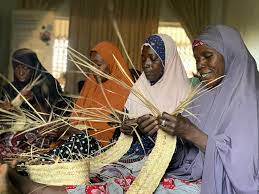
Mango (Mangifera indica) is a popular tropical fruit that is loved for its luscious taste and high nutritional value. Mango farming in Nigeria presents an excellent opportunity for agricultural entrepreneurs to capitalize on the country's favorable climate and growing demand for this delicious tropical fruit.
With its diverse agro-ecological zones and suitable soil conditions, Nigeria has the potential to become a leading producer and exporter of mangoes. This comprehensive guide will provide you with the essential information and steps to start your own mango farm in Nigeria successfully.
Selecting the Right Mango Variety:
The first crucial step in starting a mango farm is selecting the appropriate mango variety. Nigeria offers a range of mango varieties suitable for different regions and market preferences. Popular varieties in Nigeria include Tommy Atkins, Keitt, Kent, and Amelie.
Tommy Atkins - Tommy Atkins is a mango cultivar; it is the world’s most-valued and commercially traded mango because it has a very long shelf life and tolerance of handling and transportation with little or no bruising or degradation. The variety, however, may not be considered by many as the best if you are looking for sweetness and flavor.
Keitt - For a farmer looking for superior taste, Keitt is what he is looking for. It is described as one of the most superior mango varieties because of its taste and other beneficial properties. Its harvest time is June and September. The variety is also notable for disease resistance.
Apart from these, Keitt mango variety has other added advantages which include high yield and ripening time. Long cultivation season and productivity make this variety of mango one of the most popular among all other types.
Sindhri (Honey mango) - Sindhri, a variety of mango also known as “Honey Mango” is extremely sweet and has fantastic flavour. It is described as the national fruit of Pakistan. This mango is sharply elongated in shape and has a pointed curve.
The challenge with this variety is that when ripe, it cannot be stored for more than two to three days without a cooling system because its flesh is really soft and melts very quickly. But in appearance, it has uniform color and does not possess spots.
Cherry - Cherry mango is rich and spicy with after taste of turpentine and kerosene. You will know it is ripe when the green colour diminishes and yellow becomes dominant. It is also called sheri, sherry or cherie. It is green in colour and has an ellipse shape.
Peter - Peter mango is green in colour and is large. It is sweet like sugar when it is ripe, and firm in nature. It is red blush when it becomes ripe.
Kesar - Is smaller in size with round shape and it is the second most exported item because of its great sweetness. Though it is dull in appearance with patches of yellow color, it is really smooth and also has a nice fragrance with intense yellow flesh. The soft patches endear this variety of mango to most people globally.
Glenn - Glenn is a variety of mango that is also very sweet, tangy, and rich with good flavour. It is also great for its disease resistance quality. Its exotic aroma and taste make it one of the world’s top mango varieties.
Ogbomoso - Indigenous to Nigeria, the Ogbomoso mango is renowned for its exquisite taste and succulent pulp. It is a popular variety in local markets and is highly valued for its excellent flavor.
Consider factors such as taste, yield potential, disease resistance, and market demand when choosing the variety for your farm.
Suitable Growing Regions:
Nigeria's diverse climate allows for mango cultivation in various regions across the country. The major mango-growing states include Kano, Jigawa, Sokoto, Katsina, Zamfara, and Kaduna in the northern region, as well as Oyo, Osun, Ondo, and Edo in the southwest. These regions offer the ideal combination of warm temperatures, moderate rainfall, and well-drained soils, which are essential for mango tree growth and fruit production.
Land Preparation and Soil Requirements:
Mango trees thrive in well-drained soils with a pH range of 6.0 to 7.5. Before planting, ensure that the land is well-prepared, free from weeds, and has adequate drainage. Conduct a soil test to determine its fertility status and make necessary amendments based on the test results. Mango trees require good organic matter content and proper soil drainage for optimal growth.
Propagation Methods:
Mango trees can be propagated through various methods, including grafting, budding, and air layering. Grafting is the most commonly used method due to its high success rate. Select healthy and disease-free rootstock and scion material for grafting. Seek assistance from agricultural experts or experienced farmers to ensure successful propagation.
Planting and Spacing:
Choose healthy and disease-free mango seedlings from reliable nurseries. The ideal time for planting mango trees in Nigeria is during the rainy season when there is enough moisture in the soil. Dig holes that are wide and deep enough to accommodate the root system of the seedlings. Provide adequate spacing between the trees, typically 10 to 12 meters apart, to allow for proper growth and sunlight penetration.
Irrigation and Water Management:
Mango trees require regular watering, especially during the dry season. Establish an efficient irrigation system such as drip irrigation or sprinklers to ensure the trees receive an adequate water supply. Proper water management is crucial, as overwatering or waterlogging can lead to root rot and other diseases. Mulching can help retain soil moisture and suppress weed growth.
Pruning and Training:
Pruning is essential for shaping the mango tree, promoting air circulation, and facilitating easier harvesting. Prune the trees during the dormant season to remove dead or diseased branches and maintain the desired tree height. Training the trees early on can help achieve a strong and well-structured canopy.
Pest and Disease Management:
Mango trees are susceptible to various pests and diseases, including mango seed weevils, fruit flies, anthracnose, and powdery mildew. Implement integrated pest management (IPM) techniques, such as the use of biopesticides, cultural practices, and regular monitoring, to control pests effectively. Seek guidance from agricultural extension officers to identify and manage common mango diseases.
Fertilization and Nutrient Management:
Apply appropriate fertilizers based on soil test recommendations and the nutritional requirements of mango trees. A balanced fertilizer with essential nutrients like nitrogen, phosphorus, and potassium should be applied at regular intervals. Organic manure and compost can also be used to improve soil fertility and nutrient availability.
Harvesting and Post-Harvest Handling:
Mango trees typically start bearing fruit within 3 to 5 years after planting. Harvest the mangoes when they reach optimum maturity, based on the variety and desired market specifications. Handle the fruits carefully to avoid bruising and damage. Proper post-harvest practices, including washing, drying, grading, and packing, are essential to maintain fruit quality and increase marketability.
Marketing and Market Opportunities:
Identify potential buyers and market channels for your mangoes, including local markets, supermarkets, exporters, and processing companies. Establish networks with existing mango farmers and agricultural organizations to stay updated on market trends and opportunities. Consider value addition and product diversification options such as mango juice, dried mangoes, or mango-based jams and sauces.
Conclusion:
Starting a mango farm in Nigeria can be a rewarding venture with proper planning, knowledge, and dedication. The country's favorable climate and abundant resources provide a conducive environment for successful mango cultivation. By following the comprehensive guide provided above, aspiring mango farmers can embark on this agricultural journey and contribute to the growth of the mango industry in Nigeria.
Remember to seek advice from agricultural experts and local authorities to ensure the best practices are implemented for sustainable mango farming success.






















